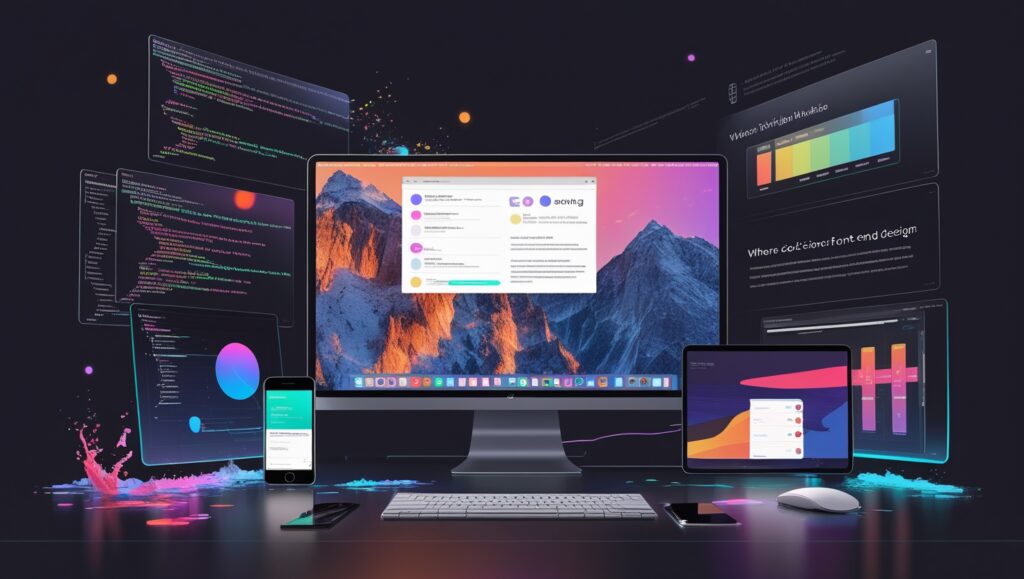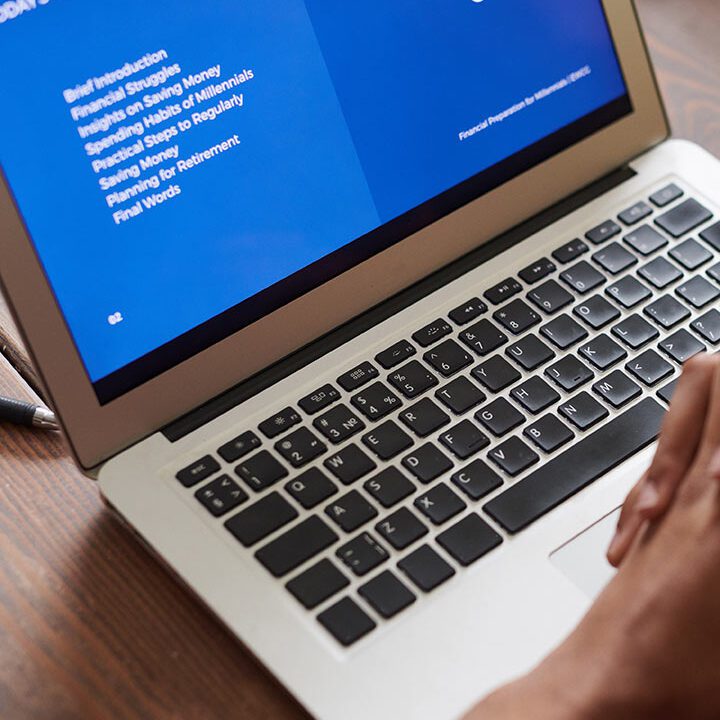Supercharge Your Front End Design Game with These Hot Tips
Why Front End Design Matters
Let’s be real—first impressions are everything. In the digital world, that first impression comes from your website’s front end. Users judge a site in mere seconds, and if it doesn’t look or feel right, they bounce faster than you can say “404.”
The Evolving Role of Front End Design Developers
That days are gown when front end design development was just about making things look pretty. Today’s front end pros are part designer, part developer, part UX expert, and part performance guru. Ready to level up? Let’s go!
Master the Fundamentals
HTML, CSS, and JavaScript – Still the Core
Before diving into fancy frameworks, make sure your basics are rock solid. HTML gives structure, CSS handles style, and JavaScript brings interactivity. Nail these three and everything else becomes easier.
Semantic HTML for Better Accessibility
Using tags like <article>, <section>, and <nav> isn’t just good practice—it’s essential for SEO and accessibility. Screen readers and search engines love clean, meaningful code.
CSS Grids and Flexbox for Layout Magic
Forget the old-school floats. Flexbox is perfect for one-dimensional layouts, and CSS Grid? That’s your go-to for complex, responsive designs. Combine them and you’re golden
Embrace Responsive Design
Why Mobile-First is the New Norm
Most users browse on their phones. If your design breaks on mobile, you’re losing traffic. Designing mobile-first ensures your layout scales up beautifully across all devices.
Media Queries and Breakpoints
Don’t just guess when your design breaks—define clear breakpoints. A common setup is:
This is CSS code
@media (max-width: 768px) { /* Tablet styles */ }
@media (max-width: 480px) { /* Mobile styles */ }
Tools to Test Responsiveness
Use tools like Chrome DevTools, BrowserStack, or even your own smartphone lineup to test across different screen sizes. Always check the real-world experience.
Polish Your UI/UX Skills
Design with the User in Mind
Think like your user. What do they want? How quickly can they find it? Is the interface intuitive? Web App Design isn’t just about looks—it’s about solving problems.
Microinteractions That Make a Difference
Small animations—like a button pulsing when hovered or a loading spinner—can elevate user experience from “meh” to memorable. Use them thoughtfully.
Color Theory and Typography Essentials
Colors evoke emotion. Typography sets tone. Learn the basics—contrast, harmony, font hierarchy. Google Fonts and Coolors are great tools to play with.
Keep Your Code Clean
BEM Methodology and Naming Conventions
BEM (Block, Element, Modifier) keeps your CSS clean and scalable. Example:
This is the CSS code
.card__title–highlighted { /* Easy to read, easy to maintain */ }
Modular CSS and SCSS
Break your styles into reusable modules. Tools like Sass (SCSS) allow nesting, variables, and mixins—your CSS just leveled up.
Code Linting and Formatting Tools
Tools like Prettier and Stylelint help you write consistent code. Set them up with your code editor, and let automation do the heavy lifting.
Use Front End Design Frameworks Wisely
When to Use Bootstrap or Tailwind
One can have clear definitions about when to actually use the said frameworks, such as saying-you use Bootstrap: for fast prototyping, with loads of pre-made components already bundled together; and on the other hand: for Tailwind, one of its utilities is that while it can allow you to create bespoke designs with classes you’ve written right into HTML. Choose the right tool for a particular task. Bootstrap would probably be your best buddy if you’re looking for the fastest way, the most jam-packed collection of ready-to-use pieces. If it’s more personalized for you, and you’re not afraid of a few more lines of CSS, then Tailwind is perfect for you.
Don’t Overdo the Frameworks
It is important here, as with everything, to have a balance: use frameworks while you can but do not go hook, line, and sinker for them. They can be really useful for the overall structure and building blocks, but make things far too convoluted with them. Know when to return to vanilla CSS for better control.
Custom Styling Best Practices
Even if you use it, do not forget to customize the default styles of the framework to those of your brands. Do not use the color, font, or space defaulted by the framework if it does not meet the target of your design.
Enhance Performance With Front End Design
Lazy Loading and Image Optimization
Images are often the heaviest assets. Compress them. Use loading=”lazy” to defer offscreen images. WebP format? Even better.
Minification and Bundling
Tools like Terser or esbuild minimize file size. Combine scripts and styles where possible to reduce HTTP requests.
Reducing HTTP Requests
Fewer files = faster load times. Inline small styles or use sprite sheets for icons. Every millisecond counts.


Leverage Modern Tools and Tech
Version Control with Git
Even solo devs need version control. Git tracks changes, saves your sanity, and helps you collaborate like a pro.
Browser DevTools Power Moves
Inspect, debug, emulate, and experiment—right in your browser. Learn your DevTools inside and out. It’s your secret weapon.
Automation with Webpack or Vite
Bundling, hot reload, code splitting—these tools streamline your workflow and make development smoother and faster.
Stay Inspired and Keep Learning
Design Trend Sites You Should Follow
Stay up to date with the latest UI design trends by following sites like:
Dribbble
Behance
Awwwards
UI Movement
Best Front End Courses and Communities
Take advantage of online learning platforms such as freeCodeCamp, Scrimba, and CSS-Tricks. Engage in communities like Dev.to and Frontend Mentor to connect with other designers and developers, share your work, and get feedback.
Final Words
One side of front end design is art, and the other is science. Mastering the basics, knowing responsive design, performance optimization, and writing clean code will take you far into the realm of impressive websites that perform great across devices.
To up your front end design game, always be aware of trends and learn new technologies. Innovation should be a constant in your life. The future demands that you step up to the plate and deliver. Everything is in a constant state of flux in the digital world.
FAQs
What’s the difference between UI and UX?
UI (User Interface) focuses on the look and feel of a product, while UX (User Experience) centers on how users interact with it. Both are crucial for a successful website.
Which CSS framework is best in 2025?
Tailwind CSS remains a popular choice for developers who prefer a utility-first approach. However, Bootstrap is still great for rapid development, especially for beginners.
How do I make my site faster?
Optimize images, minify CSS and JS files, reduce HTTP requests, and use lazy loading. Tools like Lighthouse can help you pinpoint areas for improvement.
Do I need to learn design to be a front end dev?
A basic understanding of design principles is essential, even if you’re not a full-fledged designer. Understanding how to create user-friendly, aesthetically pleasing interfaces will set you apart as a front-end developer.
How do I stay current with design trends?
Follow design blogs, subscribe to newsletters, participate in online communities, and keep experimenting with your own projects to stay updated with the latest trends.
Author







